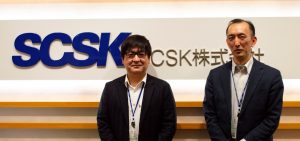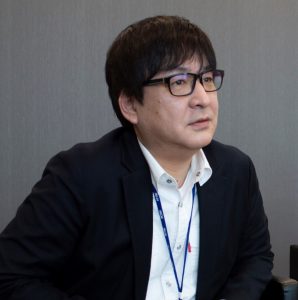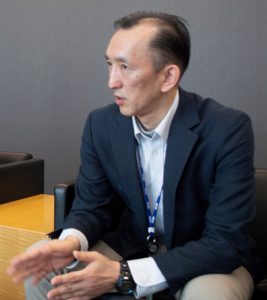In this blog, we hear how SCSK Corporation (based in Japan) are using SIAM to support their strategic goals. You can also read the original Japanese blog here.
“SIAM is indispensable for SCSK’s vision. Our goal is to increase the number of SIAM qualifications and lead the IT industry”
– An Interview with SCSK’s SIAM Human Resource Development Planner –
Recently, the external environment has changed significantly. The drastic increase in the number of cloud services means that “multi-sourcing” (using multiple vendors) is essential, and the demand for effective service integration is increasing.
Developing the skills for SIAM
In these times, human resource development also needs to evolve. The skill chosen by SCSK Corporation for this purpose is SIAM (Service Integration and Management). Mr. Kaiho (SCSK Corporation Business Promotion Div. Manufacturing & Telecommunication Systems Business Group) and Mr. Morooka (Manufacturing Systems Business Div. Manufacturing & Telecommunication Systems Business Group), have planned to have employees attend the SIAM Foundation, to enable them to fully understand SIAM and its possibilities.

The corporation is at the stage where it has to change. What sort of challenges did you encounter?
Mr Kaiho: Our company is an IT service company of the Sumitomo Corporation Group, generally referred to as System Integrator (often abbreviated as “SIer”). When constructing a system, we undertake all tasks including planning, construction and operation and support of the system, ensuring that we understand and analyze the user’s business rule and solve the user’s problems.
There is currently a debate in the industry saying, “Is SIer going to continue doing business as it is? Is it at a stage where we have to make changes?” We have approximately 12,000 employees. Sales amount to ¥ 336.6 billion. Clients want to pay for outcomes and value rather than paying for ‘headcount’ or access to staff, so SCSK needs to adapt its business model to reflect this. In the medium-term management plan, we aim to capture the structural change of the IT service market and shift to a “service provision business”. We have transactions with more than 8,000 companies, and there are many legacy services as part of this. It is necessary to transform the business model while making use of the customer contacts and to enhance the service value. In addition, we will grow our capabilities in other areas related to IT such as application development, operation, resident to center service as well as cloud. This will allow us to evolve to a comprehensive IT company, with comprehensive power. It is important for organizational side-by-side collaboration and service integration to be effective, and in the future, we must make it a strength.
Why do you plan to have employees take the SIAM Foundation?

Mr Kaiho: There are three reasons. The first is that the external environment has changed significantly. The shift to cloud services and “multi-sourcing” is inevitable, and the need for “service integration” is increasing. The second is our role as a strategic partner. In order to shift to a “service-oriented business”, we must integrate and manage services as a customer’s strategic partner to realize a sourcing strategy. The third is strengthening human resource development. ITIL is an essential qualification in our skills accreditation system, and it has already spread widely throughout the company as a basic knowledge. Currently we’re proud of being one of the largest companies with many ITIL experts in Japan.
“Human resource development needs to be further evolved. We think the next IT skill required is SIAM.”
With regard to advanced skills, why is SIAM important?
Mr Morooka: I am in charge of human resource development in our Division. We are working on human resource development from the perspective of “we have a requirement to invest in our people and their education”. We have long been a culture that fosters people while making use of the company’s culture. In a time of drastic changes in the environment, when a big change is coming, it was time to re-evaluate what kind of education is necessary.
Mr Kaiho: The importance of IT will increase in the future. And what is required is becoming more advanced. Corresponding personnel also require advanced skills. Human resource development itself is an important theme from now on.
Mr Morooka: In that context, I thought that SIAM was effective in the sense of getting multi-skills instead of specializing in one skill.
Mr. Kaiho: As we are changing from a system integrators to a service integrator, SIAM is a body of knowledge that defined what we were are aiming for. We deal with many customers, but it is not a single service for every customer. Inevitably, you have to deal with multiple services and vendors, and you have no choice but to outsource. In the flow of outsourcing, it becomes sure to be multi-sourcing. It was only SIAM that stated it clearly. So we adopted it.
What is the purpose of a service provision business, and how do you act as the customer’s strategic partner?
Mr. Kaiho: In a narrow sense, services that use monthly and subscription billing services are referred to as “service provision businesses”. In SI, the price of development, etc. has been calculated by calculation using head count, but we will change the form of delivery, and build long term relationships. I want to change the style of integrating and managing services. It means that we are thinking about such things as a part of the next era. SIAM is a management method to combine multiple services and, optimize, and provide services. The “service provision business” is consistent with that idea. A style of integration and management. That’s exactly what a strategic partner needs.
New skills require changes to the conventional education system. Please tell us about the purpose of the course you plan to attend
Mr. Kaiho: This time, 16 people were selected from the department responsible for development and maintenance of applications to receive SIAM training. We chose not to begin with the IT service management staff. The reason is that I strongly felt the need for “reform” and “job change” of employees. Application development and maintenance personnel have been relatively isolated from service management. In the past, they have studied for project management and development technology qualifications. These staff are, however, close to customers. . We believe that even if you are in charge of application development and maintenance, you have to develop service integration skills. However, it seems that the students had some trouble. It would be so. Engineers who used to work on Java suddenly need to learn process technology, so it will be a bit tricky. However, at the end, everyone was able to obtain a SIAM qualification.
When I surveyed the students, some people felt that the content was advanced, some people understood it, and although there were individual differences, it seemed that they understood the purpose of the training in general.

Mr. Morooka: This time, the staff who took the course are staff who have been in contact with customers for a long time as an IT engineer. Originally, they had technical knowledge, but they did not have the standard knowledge system of a service viewpoint. The purpose was to have the staff spread the message “Let’s become a service integrator” in the company.
Mr. Kaiho: Up until now, although the position was to develop according to the requirements decided by the customer, I think that the point of view that it is necessary to convert it to a more independent idea was fresh to the students.
Your goal is to lead the industry in SIAM; how do you think about future developments?
Mr. Kaiho: First of all, we have a company-wide plan to shift to a “service provision business”. And there is a theme that you have to evolve into a service integrator. By realizing these two, we will maximize the service value to our customers. In the future, we would like to create an outsourcing service unique to our company that will increase the number of people who can understand SIAM and work from a customer perspective. Outsourcing is a broad and hard-to-define field. That is why we need to create and communicate our features. That’s why, just as our ITIL qualified people are the most numerous in the industry, we want to be a SIAM industry leader.
“We call the people in contact with our customers the service managers, who will support our strategy. They need to get the knowledge to do that. That is because we aim for further heights.”
Mr. Morooka: The students this time were the elite units that were selected assuming that each department had feedback. In the future, we plan to hold study sessions led by staff. Then, while permeating the shift in perspective, we are thinking about choosing the next students.
Mr. Kaiho: SIAM is a foundation, but it is positioned as education for the upper layer. It picks up people who have gone to a certain level, such as ten years of employment, so it is difficult to increase rapidly. Therefore we are thinking about doing it in different ways. Although ITIL is positioned as an essential skills certification system at our company, SIAM is not yet. However, waiting for the system can lead to a time lag. In our department, we worked from the idea of going one step ahead without waiting for the system to be made. But after a while, the system will catch up. In the meantime, we want SIAM to be a mandatory system.
With thanks to:
Mr. Hirobumi Kaiho
SCSK Corporation
General Manager, Business Promotion Div. Manufacturing & Telecommunication Systems Business Group
After working in ITO and data center business, engaged in various cloud and ITSM service planning, development and operation.
Currently working as a manager in charge of promoting the outsourcing business.
Mr. Makoto Morooka
SCSK Corporation
Manufacturing Systems Business Div. Manufacturing & Telecommunication Systems Business Group
Divisional Headquarters human resource development charge, in-house development standard introduction promotion person in charge


